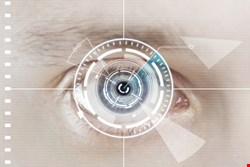
Over the next five years, a combination of unique biological identity and biometric data, such as facial definitions, iris scans, and voice files, will replace the current user ID and password system for safeguarding personal identity and information, predicted David Nahamoo, IBM fellow and speech chief technology officer.
Nahamoo explained that there are three primary methods of authentication: things we have, such as a badge or ID card; things we are, such as how we look, speak, and walk; and things we know, such as a password.
“The question has always been, why should we just rely on things we have and things we know. Why not bring in the third part, things we are, which is the area of biometrics?”, Nahamoo told Infosecurity.
“A single biometric has been falling short of providing secure authentication. But we know that by mixing multiple biometrics, we can get there”, he explained.
Prototypes of multi-factor biometrics are being developed. “We clearly see that this thing is crossing the threshold of the technology capability and entering into how do you integrate the technology into the environment”, he said.
Nahamoo said that cost of multi-factor biometrics would be more than made up for in the amount of fraud that would be prevented. “The prediction of the level of fraud that could result from lost or stolen mobile devices is concerning the financial community….While initially, the price of the multi-factor biometric system might not be immediately competitive with an RSA token, for example, in the long term” the improved security and convenience will make up for the initial cost, he asserted.
In a blog, Nahamoo explained that the move to mobile phones and tablets has increased the urgency of developing biometric technology to secure these devices.
“These devices are not yet outfitted with operating systems and security elements that are as strong as immobile devices of the past. Biometric security can strengthen those weaknesses”, he wrote.
"We can take advantage of the advanced technology being used in the smart devices, such as microphones, touch screens and high definition cameras, to fully employ biometric security options”, Nahamoo continued. “While there is already some adoption of facial and voice recognition, combining these and other biometric data points in the near future can eliminate the hassle of memorizing, storing and securing account IDs and passwords and at the same time give users a greater security confidence”, he added.
Other predictions in the IBM 5 in 5 include using kinetic energy to power homes, offices, and cities; translating thoughts into actions via smart devices; eliminating the digital divide; and using real-time analytics to integrate and prioritize data based on personal interests and attributes.